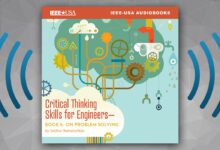
Through unparalleled work on green technologies, IEEE members continue to shape a future sustainable energy landscape in the United States, and around the world.
Today, more than ever, we need domestic energy that’s environmentally sound–that creates jobs and protects all people. “The new energy economy,” said former Colorado Governor Bill Ritter, Jr., in his opening keynote address, “is based on a balancing of energy, environment, economy and equity.” These words shaped the two-day IEEE conference on green technology, clean energy, and low-carbon solutions to humanity’s energy and environmental challenges.
In its fifth year, IEEE GREENTECH 2013 brought together 150 people from more than 30 countries in early April to the city of Denver, Colo., itself a leader in green technology and policy, to facilitate new dialogue on engineers’ roles in emerging green technology markets.
Held at the Hyatt Regency Denver Tech Center, the conference featured numerous IEEE members as keynote speakers, including IEEE Past President, Dr. Gordon Day; Dr. Mehrdad Ehsani, of Texas A&M University; Dr. Sam Baldwin, of the U.S. Department of Energy; Wanda Reder, of S&C Electric Company; and Steven Saylors, of Vestas Americas.
Dr. Day opened the conference by pronouncing that “engineers have done more to enhance the quality of life than any other profession,” primarily through their work on electric power and energy systems. Inventions, according to Day, define our quality of life and determine our prosperity-and all of these things depend on energy.
Dr. Sam Baldwin, chief science officer at the U.S. Department of Energy (DOE), and an IEEE member for 20 years, delivered a compelling keynote address, conveying how we face serious energy and environmental challenges, but energy efficiency and renewable energy technologies have the power to meet them. DOE, according to Baldwin, is helping to develop these technologies, and modeling has found that renewable energy could supply 80 percent of the total U.S. electricity generation in 2050, meeting demand at the hourly level.
Dr. Baldwin, who cited the extensive repository of IEEE publications as the most valuable part of IEEE membership, explained in later conversation how renewable energy and energy efficiency projects at DOE are heavily oriented toward engineering work, especially electrical engineering. “Every single part of our office,” explained Baldwin, “overlaps with IEEE’s mandate with regular and substantial contributions made by IEEE members–for example: in the buildings program, development of solid state lighting, energy efficient appliances, photovoltaics, batteries for transportation, and wind power.”
In a keynote address, Robert Kennedy Endowed Professor at Texas A&M University, Dr. Mehrdad Ehsani, professed that achieving sustainability is a particularly complex problem because the issue is deep and opinionated. While engineers’ technical solutions would ideally overcome prevailing false opinions, Ehsani said there is an engineering and policy gap that often prevents engineers from effectively informing the policymaking process.
Further, he stressed that engineers must refine their communications skills and broaden their technical thinking, to convey solutions in a smarter and more organized way. Dr. Ehsani, an IEEE member for more than 30 years, said that IEEE has taught him about professionalism and the value of belonging to a profession, by providing opportunities to meet and learn from colleagues. Ehsani has been working on sustainable energy, or in its support technologies, for nearly three decades.
But for many young engineers, green technology is a ripe field to explore during grad school–and one in which to seek a job after graduation. To the many young job-seeking engineers, Dr. Baldwin suggested that they push to get the most out of their IEEE membership–by taking advantage of the extensive collaboration possible through IEEE-by engaging with fellow IEEE members, and building a network of peers. And Dr. Ehsani encouraged young engineers to be creative, to dream, and to have fun with work.
Dr. Charles Kutscher, principal engineer at the National Renewable Energy Laboratory, gave the closing keynote address. Kutscher demonstrated the perils that climate change may bring. And he explored the immense opportunities that clean energy technologies may play in mitigating its impact.
It was during this final session that Dr. Ehsani’s words rang the truest: “There is nothing that can withstand the power of a young person with a purpose,” he said. From the excitement and enthusiasm displayed at IEEE GREENTECH 2013, coupled with the immensity of the challenges before us, it is apparent that young IEEE members with a purpose will lead the way to a cleaner, greener, energy economy of the future.
Dr. Patrick E. Meyer is an IEEE member, based in Washington, D.C. He served as 2012 IEEE-USA Engineering & Diplomacy Fellow at the U.S. Department of State’s Bureau of Energy Resources, and as 2011 IEEE-USA Congressional Fellow with Congressman Jay Inslee in the U.S. House of Representatives.






